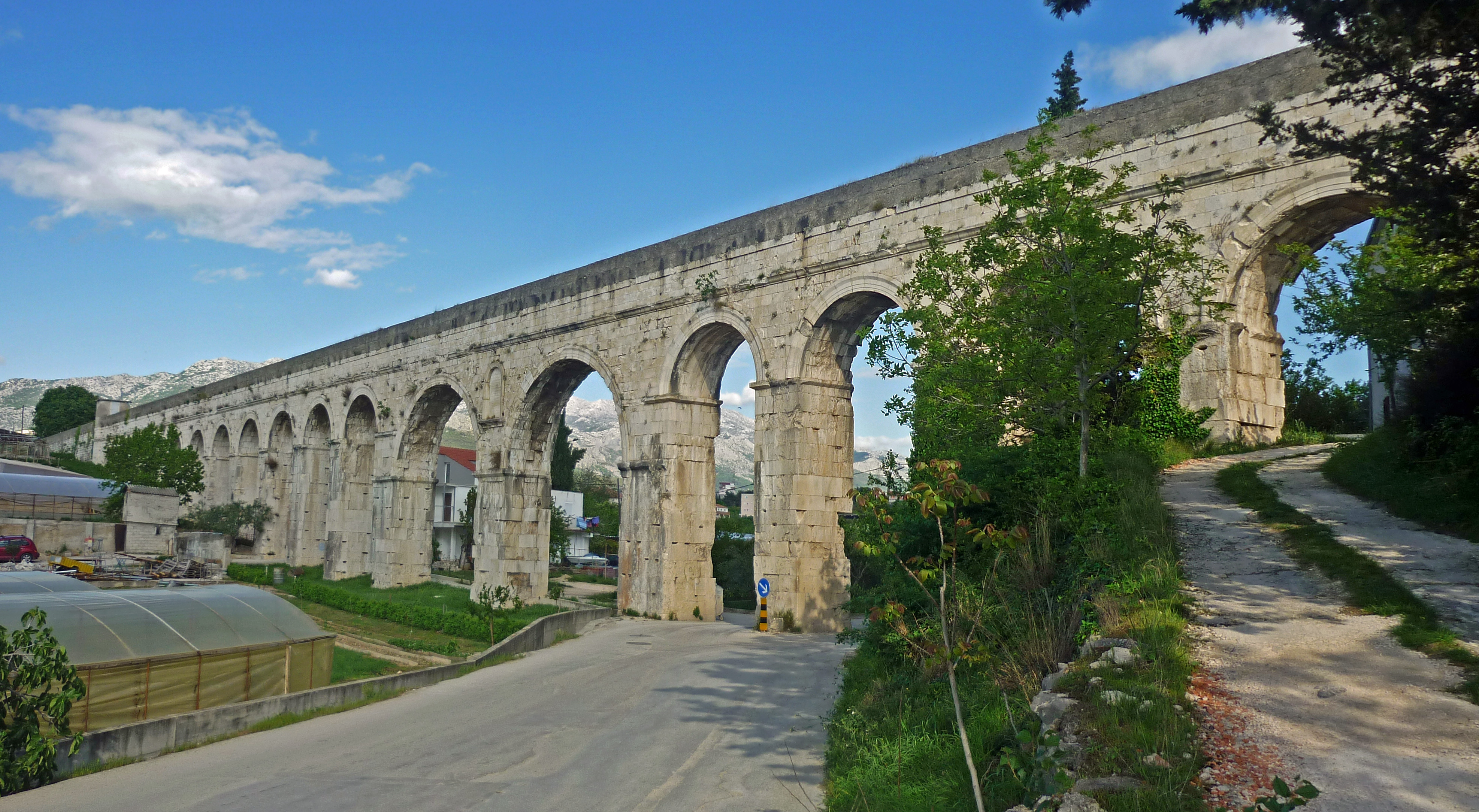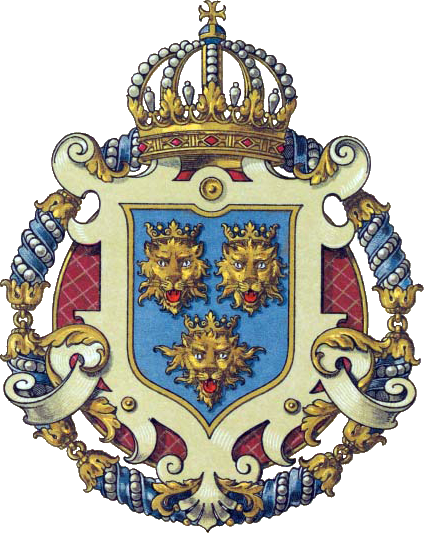|
Antonio Bajamonti
Antonio Baiamonti (19February 182213January 1891) was an Austrian and Dalmatian Italian politician and longtime mayor of Split. He is remembered as one of the most successful mayors of the city, occupying the post almost continuously for twenty years (1860–1880). He was the last Italian mayor of Split. He was a medical doctor by profession. Bajamonti's parents were Giuseppe Bajamonti (Pretorial Chancellor of Vis) and Elena Candido of Šibenik. Unlike many of his predecessors and successors, Bajamonti brought peaceful cooperation between the city's Romance (Italian) and Slavic (Croatian) citizens. His personality alone held off national strife brought on by the Age of Nationalism. Mayor of Split Bajamonti became Mayor of Split on 9January 1860 for the Autonomist Party (succeeding Šimun de Michieli-Vitturi) and stayed in office until 1864, when he was relieved because of his opposition to Austrian centralism. He was replaced by Frano Lanza, but in 1865 he united with the P ... [...More Info...] [...Related Items...] OR: [Wikipedia] [Google] [Baidu] |
Šimun De Michieli-Vitturi
Simeone de Michieli-Vitturi was a Dalmatian politician who served as the Mayor of Split The Mayor of the City of Split ( hr, Gradonačelnik Grada Splita), colloquially the ''Poteštat'' (derived from "'' podestà''"), is the highest official of the Croatian city of Split. From 1990 to 2007 the mayor was elected by the city assembly. S ..., and a member of the 1867 Imperial Council. References Mayors of Split, Croatia People from the Kingdom of Dalmatia {{Croatia-politician-stub ... [...More Info...] [...Related Items...] OR: [Wikipedia] [Google] [Baidu] |
Šibenik
Šibenik () is a historic city in Croatia, located in central Dalmatia, where the river Krka flows into the Adriatic Sea. Šibenik is a political, educational, transport, industrial and tourist center of Šibenik-Knin County, and is also the third-largest city in the Dalmatian region. As of 2011, the city has 34,302 inhabitants, while the municipality has 46,332 inhabitants. History Etymology There are multiple interpretations of how Šibenik was named. In his fifteenth century book ''De situ Illiriae et civitate Sibenici,'' Juraj Šižgorić describes the name and location of Šibenik. He attributes the name of the city to it being surrounded by a palisade made of ''šibe'' (sticks, singular being ''šiba''). Another interpretation is associated with the forest through the Latin toponym "Sibinicum", which covered a narrower microregion within Šibenik on and around the area of St. Michael's Fortress. Early history Unlike other cities along the Adriatic coast, which we ... [...More Info...] [...Related Items...] OR: [Wikipedia] [Google] [Baidu] |
Dalmatianism
Dalmatianism, Dalmatianness or Dalmatian nationalism refers to the historical nationalism or patriotism of Dalmatians and Dalmatian culture. There were significant Dalmatian nationalists in the 19th century, but Dalmatian regional nationalism faded in significance over time in favor of ethnic nationalism. 17th century Dalmatian poet Jerolim Kavanjin (''Girolamo Cavagnini'') exhibited Dalmatianism, identifying himself as "Dalmatian" and calling Dalmatia his homeland, which John Fine interprets not to have been a nationalist notion. During Dalmatia's incorporation in Austrian Empire, with the Autonomist Party in Dalmatia refusing and opposed plans to incorporate Dalmatia into Croatia; instead it supported an autonomous Dalmatia based on a multicultural association of Dalmatia's ethnic communities: Croats, Serbs, and Italians, united as Dalmatians.Maura Hametz. ''In the Name of Italy: Nation, Family, and Patriotism in a Fascist Court: Nation, Family, and Patriotism in a Fascist Cou ... [...More Info...] [...Related Items...] OR: [Wikipedia] [Google] [Baidu] |
Dalmatia
Dalmatia (; hr, Dalmacija ; it, Dalmazia; see #Name, names in other languages) is one of the four historical region, historical regions of Croatia, alongside Croatia proper, Slavonia, and Istria. Dalmatia is a narrow belt of the east shore of the Adriatic Sea, stretching from the island of Rab in the north to the Bay of Kotor in the south. The Dalmatian Hinterland ranges in width from fifty kilometres in the north, to just a few kilometres in the south; it is mostly covered by the rugged Dinaric Alps. List of islands of Croatia, Seventy-nine islands (and about 500 islets) run parallel to the coast, the largest (in Dalmatia) being Brač, Pag (island), Pag, and Hvar. The largest city is Split, Croatia, Split, followed by Zadar and Šibenik. The name of the region stems from an Illyrians, Illyrian tribe called the Dalmatae, who lived in the area in classical antiquity. Later it became a Dalmatia (Roman province), Roman province, and as result a Romance languages, Romance culture ... [...More Info...] [...Related Items...] OR: [Wikipedia] [Google] [Baidu] |
House Of Bajamonti
The Bajamonti family is considered one of the most prestigious families of the city of Split in Croatia. The family originated in Bergamo, Lombardy. The Bajamonti family has been mentioned for the first time in Split Registry Books at the beginning of the 18th century (1704) as owners of a very rich library collection. The first data about the library had been recorded by Julije Bajamonti (Giulio Bajamonti) (1744–1800), registering that the big fire of 1787 had seriously damaged the collection. Until recently, the public has only been acquainted with a few titles preserved by the Split Archeological Museum Library. Recent research of the Rara Collection in the University Library of Split resulted in the discovery of thirty-two titles collected in fifty-one volumes and in fact bearing the exlibris signatures of Gian Domenico and Girolamo Bajamonti or in some cases signed just Bajamonti. The titles cover the topics ranging from grammar, philosophy, classical and Italian literatu ... [...More Info...] [...Related Items...] OR: [Wikipedia] [Google] [Baidu] |
Fascism
Fascism is a far-right, authoritarian, ultra-nationalist political ideology and movement,: "extreme militaristic nationalism, contempt for electoral democracy and political and cultural liberalism, a belief in natural social hierarchy and the rule of elites, and the desire to create a (German: “people’s community”), in which individual interests would be subordinated to the good of the nation" characterized by a dictatorial leader, centralized autocracy, militarism, forcible suppression of opposition, belief in a natural social hierarchy, subordination of individual interests for the perceived good of the nation and race, and strong regimentation of society and the economy. Fascism rose to prominence in early 20th-century Europe. The first fascist movements emerged in Italy during World War I, before spreading to other European countries, most notably Germany. Fascism also had adherents outside of Europe. Opposed to anarchism, democracy, pluralism, liberalism ... [...More Info...] [...Related Items...] OR: [Wikipedia] [Google] [Baidu] |
Diocletianus Aqueduct
The Aqueduct of Diocletian ( hr, Dioklecijanov akvadukt) is an ancient Roman aqueduct near Split, Croatia () constructed during the Roman Empire to supply water to the palace of the emperor Diocletian, who was ''Augustus'' 284 to 305 AD, retired to Spalatum, and died there in 311. Description The Aqueduct of Diocletian was constructed between the end of 3rd and beginning of the 4th century AD, at the same time as the palace. The aqueduct took water from the river Jadro, 9 kilometres northeast of Diocletian's Palace, today Split's city centre, and brought water to the Palace over a height difference of 13 m. Another aqueduct took water from the same source to Salona. The aqueduct was destroyed in the invasion of Goths in the middle of 6th century and did not work for thirteen centuries after that. The first reconstruction of the aqueduct took place during the reign of the Austro-Hungarian Empire (1877–1880). The Diocletianic aqueduct was abandoned in 1932, when the modern ... [...More Info...] [...Related Items...] OR: [Wikipedia] [Google] [Baidu] |
Diet Of Dalmatia
The Diet of Dalmatia ( hr, Dalmatinski sabor, it, Dieta della Dalmazia) was the regional assembly of the Kingdom of Dalmatia within the Austro-Hungarian Empire. It was founded in Zadar in 1861 and last convened in 1912, before being formally dissolved in 1918, with the demise of the Empire. Since the founding of the Dalmatian diet, the pro-Italian Autonomist Party held the parliamentary majority until 1870, when the (Croatian-Serbian) People's Party won the parliamentary election. Croatian then became the official language of the diet in 1883. The premises Under the constitutional reforms promoted by Emperor Franz Joseph I of Austria, under an imperial decree dated 20 October 1860, the Empire underwent a form of "federalization", following the majority opinion of the Board Empire. According to these determinations, many legislative and judicial powers were conferred onto every province in the kingdom through the reconstitution of the powers—or the creation of new powers— ... [...More Info...] [...Related Items...] OR: [Wikipedia] [Google] [Baidu] |
Dujam Rendić-Miočević
The Mayor of the City of Split ( hr, Gradonačelnik Grada Splita), colloquially the ''Poteštat'' (derived from "''podestà''"), is the highest official of the Croatian city of Split. From 1990 to 2007 the mayor was elected by the city assembly. Since 2007 Croatian mayors are elected directly by the citizens. The first such election in Split occurred in 2009. List Here follows a list of the 72 men who have thus far served as Mayor (or President of the City Council) of the City of Split. They were immediately preceded by the succession of ''podestà'' (city "princes" or "governors", ''kneževi'') under the Venetian Republic. The latter were colloquially known as "''poteštati''", and usually also held the office of Captain of the City. The term "''poteštat''" has since remained as a local, traditional term for the mayor as well. Kingdom of Italy French Empire Austria Kingdom of Yugoslavia World War II Federal Yugoslavia Since independen ... [...More Info...] [...Related Items...] OR: [Wikipedia] [Google] [Baidu] |
Croats
The Croats (; hr, Hrvati ) are a South Slavic ethnic group who share a common Croatian ancestry, culture, history and language. They are also a recognized minority in a number of neighboring countries, namely Austria, the Czech Republic, Germany, Hungary, Italy, Montenegro, Romania, Serbia, Slovakia and Slovenia. Due to political, social and economic reasons, many Croats migrated to North and South America as well as New Zealand and later Australia, establishing a diaspora in the aftermath of World War II, with grassroots assistance from earlier communities and the Roman Catholic Church. In Croatia (the nation state), 3.9 million people identify themselves as Croats, and constitute about 90.4% of the population. Another 553,000 live in Bosnia and Herzegovina, where they are one of the three constituent ethnic groups, predominantly living in Western Herzegovina, Central Bosnia and Bosnian Posavina. The minority in Serbia number about 70,000, mostly in Vojvodina. The ... [...More Info...] [...Related Items...] OR: [Wikipedia] [Google] [Baidu] |
People's Party (Kingdom Of Dalmatia)
People's Party ( hr, Narodna stranka) was a political party in the Kingdom of Dalmatia. It was founded in 1861 after the failure of Bach's absolutism, as a branch of the People's Party in Kingdom of Croatia-Slavonia. Its members were known as ''narodnjaci'', ''aneksionisti'' or ''puntari''. Its political goal was uniting Dalmatia with Croatia and Slavonia, stemming from their ideological origins in the Illyrian movement. It also gathered prominent Dalmatian Italians as well as Dalmatian Serbs. However, a Serb faction splintered in 1878, led by Stjepan Mitrov Ljubiša, into the Serb People's Party. From 1887 People's Party was renamed People's Croatian Party (), as a result of an internal compromise between the conservative majority led by Miho Klaić and a radical minority led by Mihovil Pavlinović and Juraj Biankini. It united with the Party of Rights in 1905 into the "Croatian Party". Notable members *Gajo Bulat *Miho Klaić *Lovro Monti *Vid Morpurgo *Natko Nodilo *Mihov ... [...More Info...] [...Related Items...] OR: [Wikipedia] [Google] [Baidu] |
.jpg)



.png)